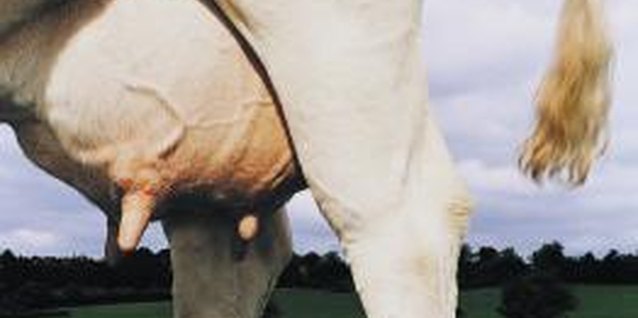Cow milk is the most widely used milk all around the world, but, just like every good thing, cow milk also has its side effects. Below are some of the side effects of taking cow milk.
1. Broken bones
Despite the hype, cow’s milk actually robs our bones of calcium. Animal proteins produce acid when they’re broken down, and calcium is an excellent acid neutralizer, so … you can see where this is going. In order to neutralize and flush out the acids, our bodies have to use the calcium that the milk contains—as well as some from our own stores.
So every glass of milk we drink leaches calcium from our bones. That’s why medical study after medical study has found that people who consume the most cow’s milk have significantly higher fracture rates than those who drink little to no milk. And if you’re eating large amounts of cheese? Throw in a heaping helping of saturated fat, sodium, and cholesterol on top of that.
2. Prostate cancer
Milk and cheese have been linked to an increased risk of developing prostate cancer. But dairy-free diets? They’ve been shown to slow its progress.
3. Lactose intolerance
The lactose in cow’s milk can be difficult for people to digest, resulting in nausea, cramps, gas, bloating, and diarrhea. The difficulty with dairy digestion can develop later in life and result in progressively worsening symptoms.

4. Acne
In multiple studies, the consumption of all types of dairy “products” was linked to an increased prevalence and severity of acne in both boys and girls.
5. Cholesterol
A single serving of milk can contain as much as 24 mg of heart-harming cholesterol. A single ounce of queso packs 30 mg. But no plant food contains any cholesterol whatsoever.

6. Ovarian cancer
A Swedish study showed that women who consumed four or more servings of dairy “products” each day were twice as likely to develop serous ovarian cancer.
7. Milk allergies
A different beast than lactose intolerance, milk allergies can cause potentially strong and dangerous reactions (usually in young children), such as vomiting or anaphylaxis.

8. Antibiotics
Cows are often pumped full of antibiotics to keep them alive and producing milk in filthy factory farm conditions. We can thank this rampant overuse of them for the surge in antibiotic-resistant bacteria. When humans are infected by these superbugs, antibiotics at best have decreased effectiveness and at worst are powerless.
9. Saturated fat
A single serving of whole milk can contain more than 20 percent of the recommended daily allowance of saturated fat. If you consume three servings of whole milk, you’re already at 60 percent for the day—even before eating any food. Cheese is even worse: Harvard reports that pizza and cheese are the biggest food sources of saturated fat in the American diet.

10. Weight gain
Despite industry claims, a study of more than 12,000 children showed that the more milk they drank, the more weight they gained—and skim and 1 percent milk actually appeared to lead to more weight gain than drinking 2 percent or whole milk. The study also found that replacing soda with milk did not lead to weight loss.
11. Sodium
Cheese can contain up to 400 mg of sodium per ounce. Varieties including halloumi, imported blue, feta, and Edam (as well as processed cheeses) are so loaded with sodium that they’re actually saltier than seawater.
12. Common Sense
Besides humans (and companion animals who are fed by humans), no species drinks milk beyond their natural age of weaning or drinks the milk of another species. Cow’s milk is suited to the nutritional needs of calves, who have four stomachs and gain hundreds of pounds in a matter of months—sometimes weighing more than 1,000 pounds before they’re 2 years old. Cow’s milk does not suit the nutritional needs of humans, so it’s no wonder that consuming it and its derivatives causes us so many problems


